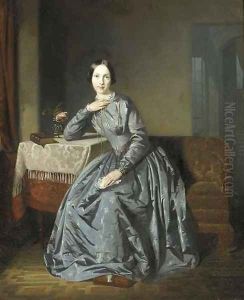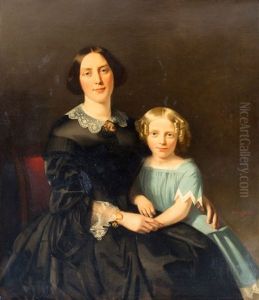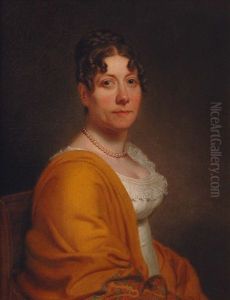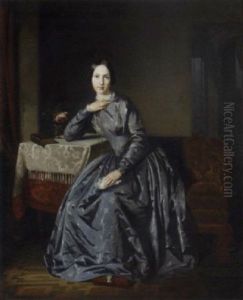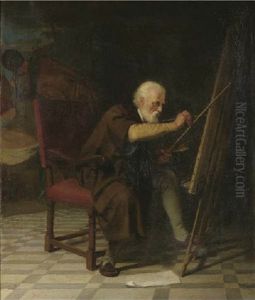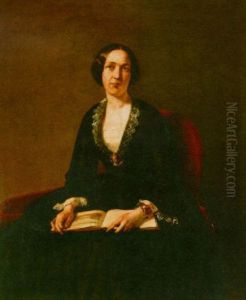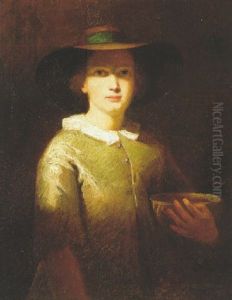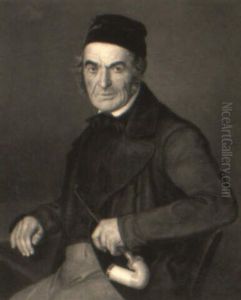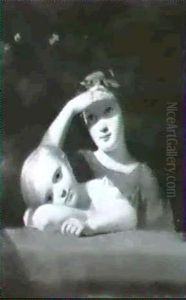Johann George Schwartze Paintings
Johann George Schwartze was a 19th-century Dutch painter, born on June 20, 1814, in Amsterdam, the Netherlands. Schwartze was known for his skill as a portraitist, capturing the likenesses and character of his subjects with a notable realism that was in demand during his lifetime. His style was rooted in the Dutch painting tradition, and he was particularly influenced by the work of Dutch Old Masters, as well as by contemporary trends in European art.
Schwartze developed his artistic talents from a young age, having been born into an artistic family. His father, Georg Schwartze, who was of German origin, was a successful sculptor and his influence undoubtedly played a significant role in Johann's early artistic development. Schwartze received formal training at the Amsterdam Academy of Fine Arts, where he honed his skills in drawing and painting.
Throughout his career, Schwartze traveled extensively in Europe, which allowed him to study and be inspired by the works of various artists across the continent. His travels included stays in Germany, France, and Italy. In Italy, he was particularly taken with the Italian masters, and the influence of Italian art can be seen in his command of chiaroscuro and his sensitive treatment of texture and fabric in his portraits.
Schwartze's success as a portraitist brought him a distinguished clientele, including members of the Dutch royal family, for whom he completed several commissions. His portraits are characterized by a sense of elegance and a fine attention to detail, often set against dark, neutral backgrounds that serve to highlight the subject. Although best known for his portraits, Schwartze also painted religious and historical scenes, as well as occasional genre works.
Johann George Schwartze's contributions to Dutch art were significant, and his works are considered important examples of 19th-century Dutch portraiture. He passed away on December 19, 1874, in Amsterdam. His legacy continued through his daughters; notably, his daughter Thérèse Schwartze became a prominent portraitist in her own right, following in her father's footsteps and further shaping the course of Dutch art.
